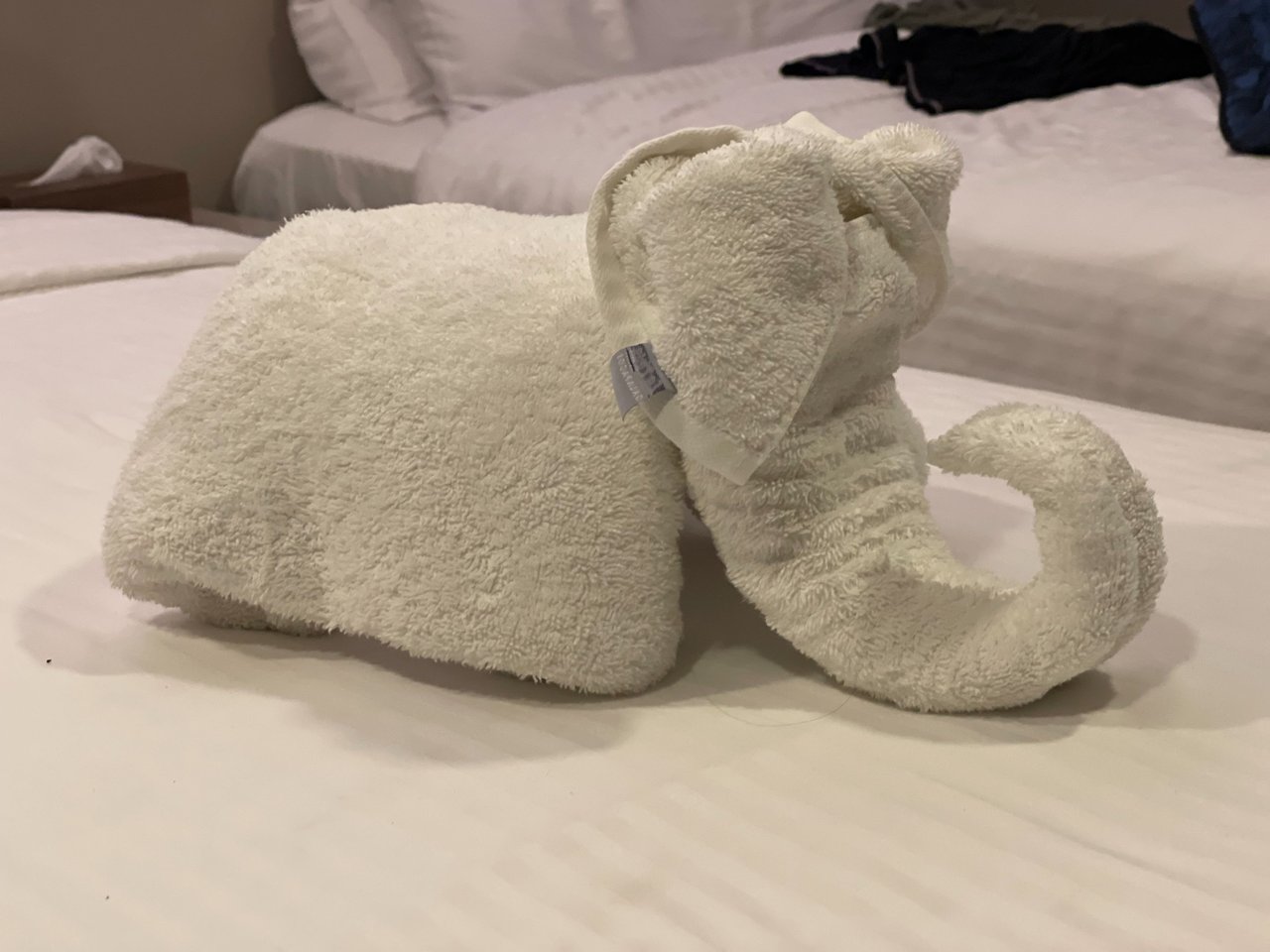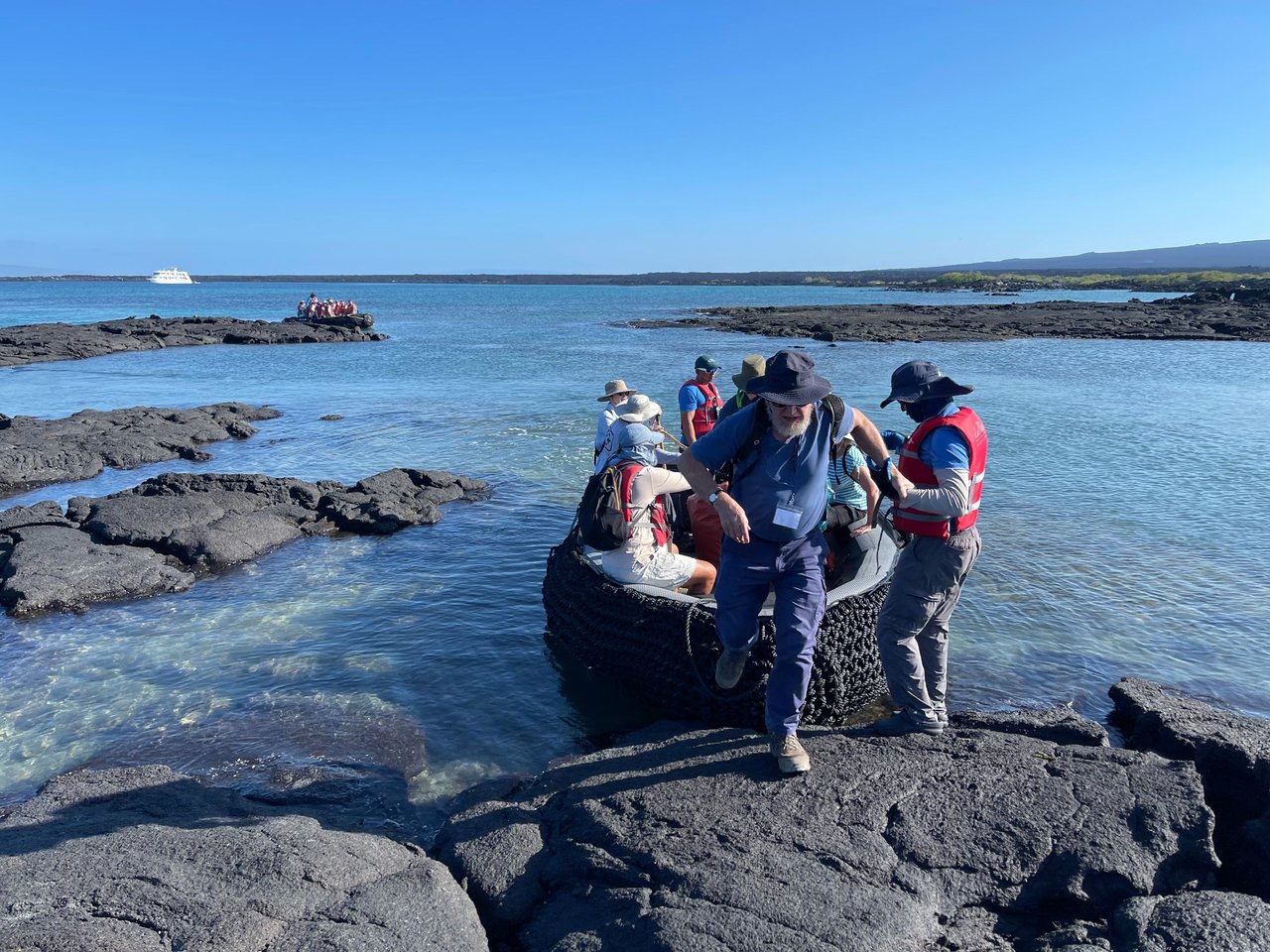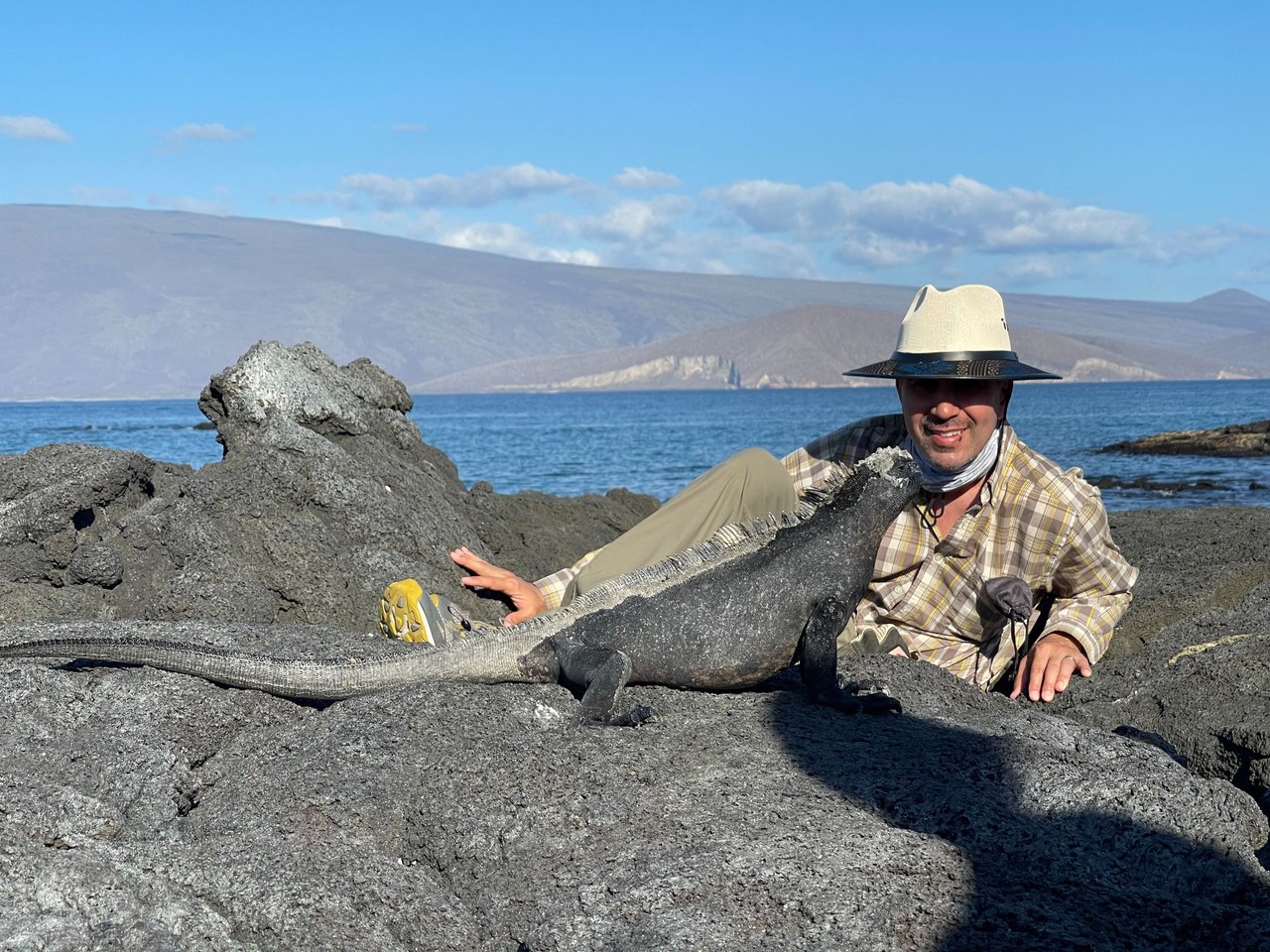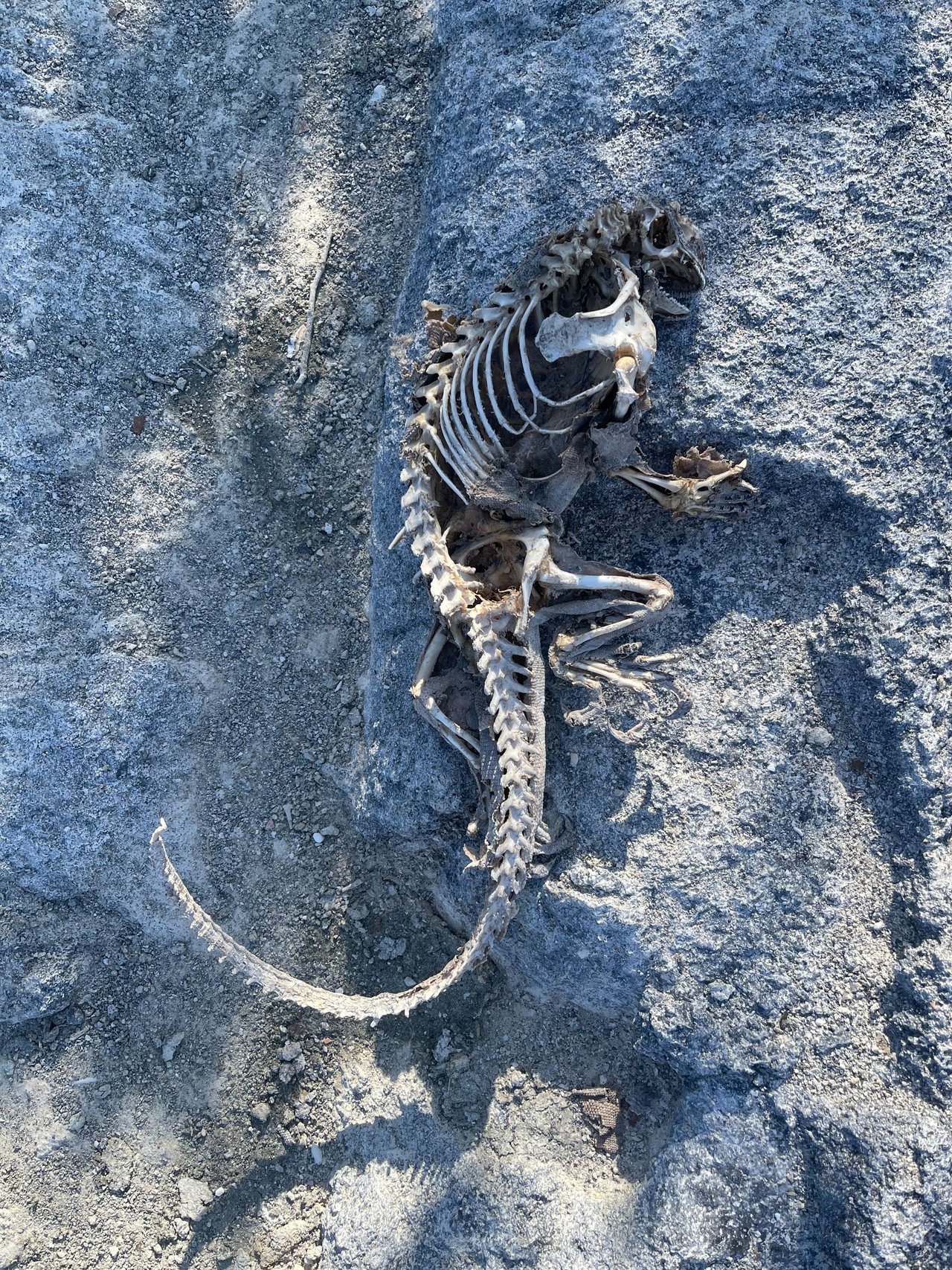Galapagos Day 2 Afternoon: Punta Espinoza on Fernandina Island

King of the mountain. These marine iguana must be modern day dinosaurs.
This afternoon we visited the youngest of the Galapagos Islands, called Fernandina. It is located in the west of the archipelago, closest to the hot spot which creates all of the islands. The islands form over the stable hot spot, which is bringing magma up from the Earth's mantle, but then the islands move off to the East with the rest of the tectonic plate. The volcano on Fernandina, known locally as Vulcan La Cumbre, erupted as recently as last march. It was no surprise then when we were greeted at the shoreline with jet black lava rock.
The lava had flowed out into the shallows, creating a network of tidepools, all filled with colorful damselfish, and even some sea lion babies. David, our guide, said that the mama sea lions will leave their pups here in the tidepools, knowing that they will be safe from predators (big sharks), until the mother gets back. The pups are totally reliant on their mom for the first year, so if something happens to her, they unfortunately won't make it.
It wasn't long before our group realized that the big patches of black lava rock that seemed to be moving was not rock at all, it was groups of endemic marine iguanas. They were everywhere, and we actually had to watch our step so we didn't end up stepping on one. If they weren't moving they blended into the black lava rocks quite well. It was also fun to watch them sneezing out salt, sometimes quite forcefully. This is an adaptation they have to deal with swimming and eating underwater in the salty ocean. They are the only iguanas on the planet that do that, and they can only be found here in the Galapagos.
Espinoza Point was made famous when it provided the location for one of the most dramatic wildlife scenes ever caught on camera debuted. In BBC's Planet Earth II, there is a scene where a baby marine iguana is born, but has to stay still while a blind snake cruises right behind it. Then it darts across the beach while racer snakes are coming out of every crevice trying to catch it. If you haven't seen it, look it up on youtube. The music adds to the suspense as well, and I guarantee you will be on the edge of your seat. There was actually a huge public outcry about why the camera man didn't get involved and save the baby iguana, but wildlife biologist understand how the circle of life works in nature and as a rule we don't get involved.
Besides the thousands of marine iguanas, we also came across more flightless cormorants, a small group of Galapagos sea lions, one random Galapagos penguin, and some lava cactus. Bright pink and orange Sally Lightfoot Crabs added a splash of color to the black lava landscape. We also came across the skeleton of an unknown baleen whale, and quite a few skeletons of iguanas and snakes. As our zodiac came in to get us I saw something breaking the surface of the shallow lagoon. It turned out to be a spotted eagle ray.
This was our only day to explore the pristine island of Fernandina, and I feel we made the most of it. The landscapes with the mangroves, tidepools, and lava rock coastline was just beautiful, and the wildlife was everywhere.
Another wild towel animal. These are next level.
This stop was all about marine iguanas. There were over a thousand here at Point Espinoza. You really had to be careful where you stepped. Our expedition ship, La Pinta, is in the background.

Yellow warbler adding a splash of color.

Marine iguanas in front of La Pinta.
Russel demonstrating the dry landing on the lava rocks at Espinoza Point.
Godzilla, or just a funny angle on a marine iguana.
David, striking a pose with his new marine iguana friend.
Fernandina is the youngest of the Galapagos Islands. It reminds me a lot of the Big Island of Hawaii. These tide pools created by lava flows had all kinds of little fish swimming around in them. Some were even nurseries for sea lion pups.
Typical Galapagos wildlife, these marine iguana didn't mind us at all.
We did a little rock hopping on the newer lava flows, avoiding the deep cracks and crevices. One difference between Hawaii and here is the presence of lava cactus, seen here growing right out of the lava.
Lava Cactus from the top down.

Iguana panorama. There were carpets of iguanas.
Skeleton of an unknown whale next to a sea turtle skeleton.
I remembered this beautiful lagoon from our last trip. The mangroves frame the pickup area at Espinoza Point.

This guy was fighting another marine iguana for being too close.

These two young sea lion pups got a little aggro with each other.

This marine iguana climbed high up on a piece of driftwood, posing perfectly for this shot.
Like I said, matts of iguanas.

Tidepools and our ship, waiting for our return.
Among the thousands of live iguanas, several skeletons of iguanas could be found. This was one of the newer ones. Racer snakes and hawks are the main predators here.

It was pretty fun seeking out the best looking, and best posed iguanas for photo shoots. I really like the green coloration on the back of this one. It also had some good armored plating on the head in front of its mohawk of spikes.

This little sea lion pup looked pretty withered and tired compared to the others on the beach. Hopefully his mother will come back soon to fatten him up!

There is a reason that the Galapagos is a wildlife photographers dream destination. The wildlife hardly moves, letting you really set up different shots and try different ideas.

The lava rocks and sandy beaches were so covered with iguanas that they ended up crawling over each other.















Comments
Post a Comment
Leaving a comment is a great way to provide feedback, ask further questions, and inspire more answers...so go for it.